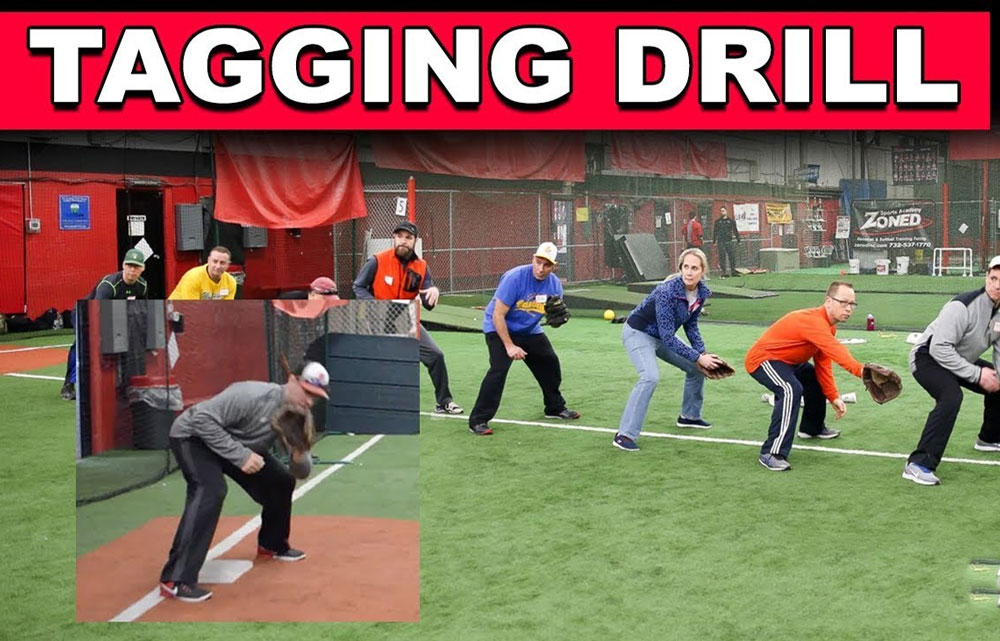Proper footwork and tagging techniques at 1st base are essential skills for any first baseman in baseball. These skills ensure that you can effectively receive throws from infielders and outfielders, make accurate tags on runners, and maintain defensive control. In this guide, we’ll explain the fundamentals of footwork and tagging techniques for 1st base.
1. Proper Footwork for Receiving Throws
Proper footwork is the foundation of playing 1st base effectively. Here’s a step-by-step guide to the footwork you should use when receiving throws:
a. Ready Position
- Begin in your ready position with your right foot on the base (left foot for left-handed first basemen).
- Your feet should be shoulder-width apart, and your knees slightly bent.
- Your glove hand should be extended toward the pitcher, while your free hand rests on your knee.
b. Maintaining Contact with the Base
- Keep your foot on the base as much as possible, even when you’re not expecting a throw.
- This “anchoring” technique ensures that you’re ready to make a tag if a runner attempts to reach the base.
c. Moving Toward the Throw
- As the play develops, move your body in the direction of the throw.
- Use short, quick steps to get to the spot where you anticipate receiving the ball.
- Maintain a low stance to ensure quick reactions.
d. Receiving the Throw
- Once the ball is thrown, focus on tracking it into your glove.
- Use your glove hand to make a clean catch, ensuring that the ball doesn’t pop out.
e. Applying Tags
- If you’re required to apply a tag (for example, on a close play at 1st base), use your free hand to tag the runner while keeping your foot on the base.
- Practice quick and accurate tagging to prevent runners from reaching safely.
2. Tagging Techniques

Tagging runners effectively is a crucial part of playing 1st base. Here are some key tagging techniques to keep in mind:
a. Positioning
- When tagging a runner, position yourself in a way that allows you to make a clear and unobstructed tag.
- Keep your glove hand close to the runner’s body to increase the likelihood of a successful tag.
b. The Swipe Tag
- The swipe tag is the most common tagging technique used at 1st base.
- As the runner approaches, swipe your glove hand toward their body to make contact and apply the tag.
- Aim to tag the runner on their torso or leg, where the ball is most likely to pass through.
c. The Block Tag
- In some situations, it may be necessary to block the runner’s path to the base.
- Position your body in front of the base and make the tag as the runner attempts to slide or step around you.
- Be cautious to avoid interference and maintain your positioning within the rules.
d. The Stretch Tag
- On throws that pull you off the base, use your agility to stretch and make the tag while keeping one foot on the base.
- This technique is particularly useful on throws that take you toward the runner’s path.
3. Practice and Repetition
Proficiency in proper footwork and tagging techniques comes with practice. Dedicate time to drills and repetition to build muscle memory and confidence in these skills.
Conclusion
1st base bag etiquette, including footwork and tagging techniques, is a blend of fundamental skills and precise execution. As a first baseman, your ability to receive throws effectively and apply accurate tags is essential for maintaining control of the base and preventing runners from reaching safely. By mastering these techniques through practice and attention to detail, you’ll become a valuable asset to your team’s defense and contribute to its overall success on the field. So, get out there, work on your footwork, and perfect your tagging techniques to excel at 1st base.
